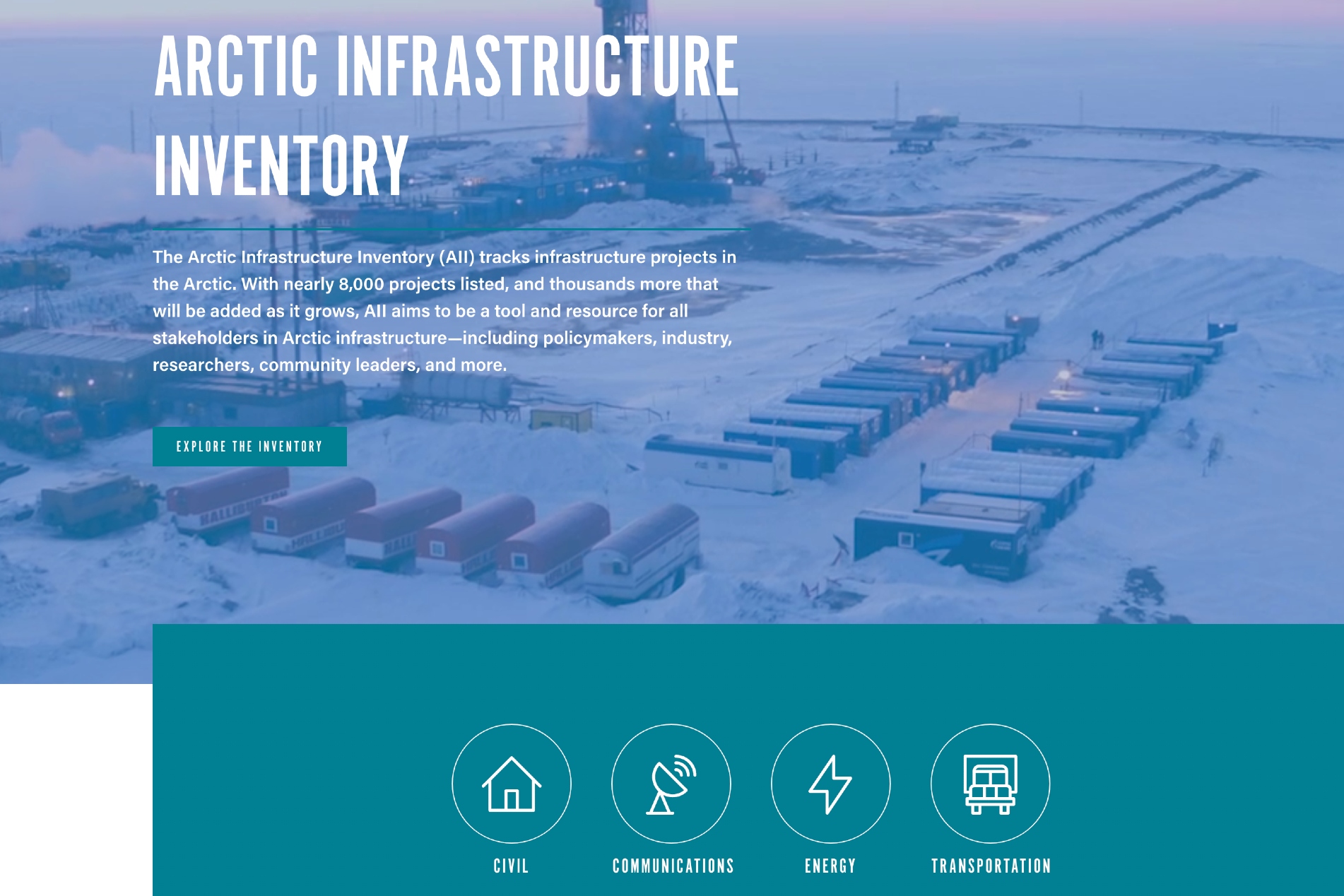A new inventory of Arctic infrastructure aims to spur sustainable development
The Arctic Infrastructure Inventory lists 8,000 projects in the Arctic to help inform investment and development policies.

A new online database of Arctic infrastructure launched on Wednesday, with the goal of filling an information gap and promoting better development in the region.
The Arctic Infrastructure Inventory, a project of the Wilson Center’s Polar Institute, lists thousands of economic projects across the Arctic, including energy projects, icebreakers, roads, airports and air strips and hospitals. (Disclosure: ArcticToday Publisher Alice Rogoff and board member Mead Treadwell are co-chairs of the Polar Institute.)
It can be difficult to grasp which infrastructure projects have been completed or planned for the region, how much it costs, and who is developing them, said Jack Durkee, a program associate with the Polar Institute and manager of the database. This inventory aims to bridge some of those knowledge gaps.
The precursor to today’s database was first assembled in 2014 by Guggenheim Partners, an investment firm that was instrumental in shaping the World Economic Forum’s Arctic Investment Protocol.
When Guggenheim’s list was handed over to the Polar Institute in December 2019, it numbered about 800 items. Since then, it has grown to about 8,000.
In addition to benefiting from Guggenheim’s list, the Wilson Center developed the new database in partnership with the Arctic Economic Council, Durkee said. It’s meant for a broad audience that includes policymakers, industry leaders, investors, researchers, academics, community leaders and anyone else interested in sustainable development in the Arctic.
“It’s intended to inform the decisions they make, whether it’s investing in certain projects or determining which project to update or which one to terminate, how to develop policy or execute policy,” he said.
Users can refine their searches by country, cost and infrastructure type. More options such as filtering by project status, public investment versus private, and country of origin and ownership will be added in the future.
“If there’s a cluster of smaller projects in a region, none of which are fully developed or funded, an angel investor for example can come in and say okay, well, these are all essential to this region’s development. Let’s just throw a lump sum of cash in and invest all of them,” Durkee said.
He cautioned, however, that the database is merely a source of information; it’s not intended to recommend any projects or policies.
Although the inventory has now formally launched, it remains a work in progress, Durkee said. Anyone may submit new project listings for review or provide feedback on existing elements of the database.
Next year, the Wilson Center also plans to add geographic information system (GIS) features, Durkee said.
That way, decision makers could overlay maps of oil and gas pipelines or airstrips over maps of changing permafrost, for example, to see which projects may need to be reinforced or where new projects might be best built.
There’s no uniform definition of the Arctic, Durkee said, so the inventory includes near-Arctic projects as well if they are linked to the development of the Arctic. About one-quarter of the listings are located in Russia.
James DeHart, U.S. coordinator for the Arctic region at the State Department, said at the inventory’s launch event on Wednesday that “infrastructure across the region obviously has great importance and implications for national security. And obviously great importance to local communities, Native communities, around the region.”
In order to protect and expand infrastructure, he said, “we need to know where the gaps are and where the opportunities exist. And I think that this inventory contributes a great deal to that.”
“I think it’s even more important when we look at the physical and the environmental changes that are happening in a dramatic fashion and will lead to the Arctic becoming a much busier place,” he said. “As the Arctic becomes busier, this will be for better or it will be for worse, and we need to strive and do all we can to ensure it’s for the better.”
Sustainable development of the region will be key as more financial institutions vow not to invest in new oil and gas in the Arctic, and retailers pledge to avoid shipping routes through the Arctic Ocean, Heidar Guðjonsson, chairman of the Arctic Economic Council, said Wednesday.
“There is no area in the world which has a better track record of being economically responsible and sustainable,” Guðjonsson argued. The database is a key step to showing the Arctic can be developed safely and sustainably, he said, because investors tend to follow successful projects. “Infrastructure follows infrastructure.”
Mead Treadwell, former lieutenant governor of Alaska, said at Wednesday’s event that the Arctic’s residents don’t have enough money to finance necessary infrastructure development in the region alone, and projects like the inventory could inform and coordinate much-needed outside investments.
“This ocean is accessible to the entire world,” Treadwell said. “And if we in the Arctic don’t take the responsibility to make sure it’s done right, we’re going to be the sorriest.”